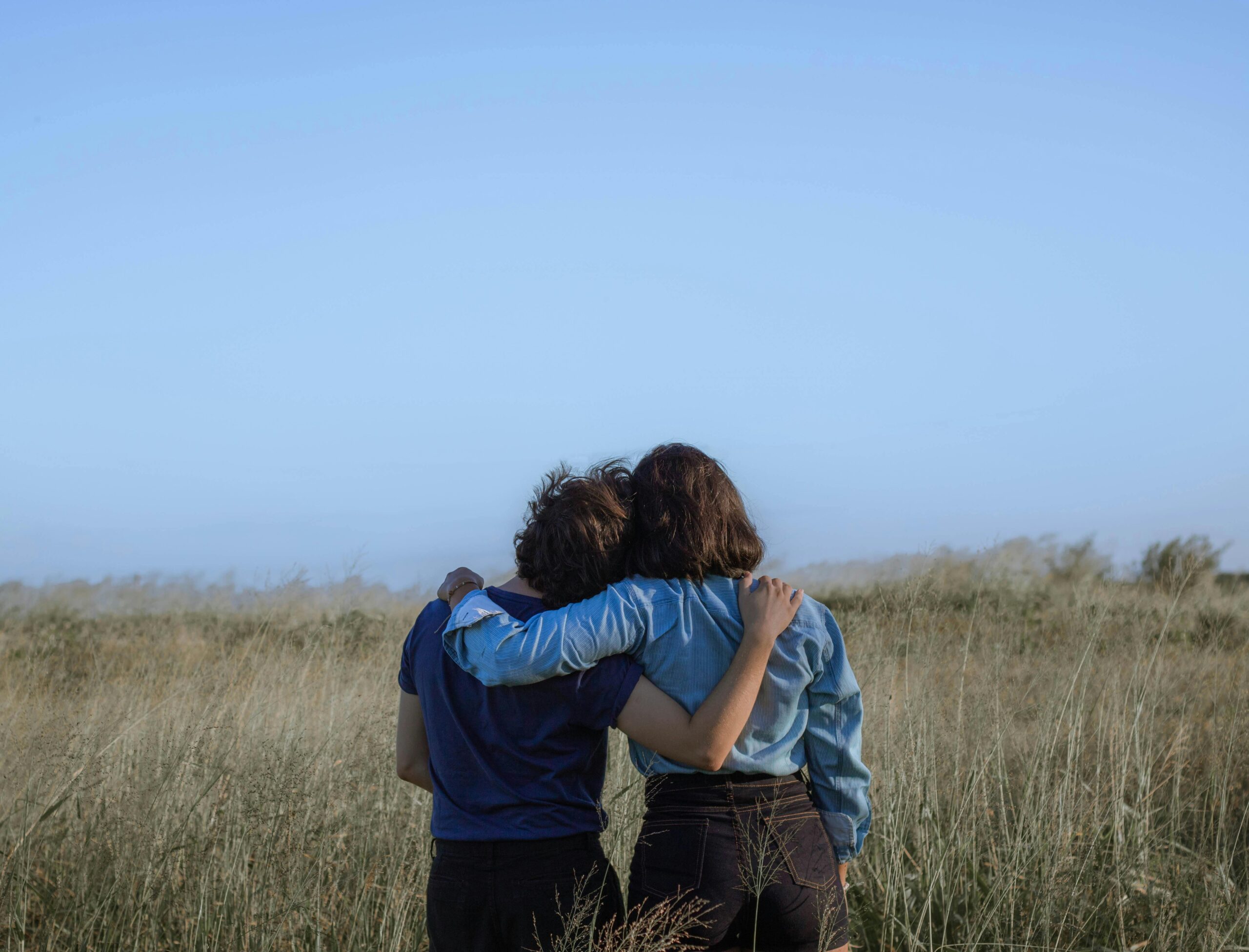
The following is an excerpt from Shannon Moroney’s ‘Heal For Real: A Guided Journal to Forgiving Others―and Yourself’ (Page Two, January 4, 2022). Informed by over a decade of work providing individual therapy and facilitating forgiveness retreats and workshops across a wide spectrum of settings―from large city conferences to tiny fly-in Arctic communities, ‘Heal For Real’ walks you through a proven curriculum that has helped thousands to make peace with the past, and achieve post-traumatic growth.
Through hands-on activities, reflections, and inspirational stories and quotes, Moroney takes you through the steps of defining what forgiveness means―and doesn’t mean―to you, and provides practical strategies that will help you offer and receive it. Along the way, you’ll also gain insight from the forgiveness journeys of incredible individuals―including Shannon’s own path toward forgiveness, following violent crimes committed by her first husband (her memoir, ‘Through the Glass‘, recounts her pursuit of justice and redemption, and her personal path to healing and forgiveness), a mental health expert, and a restorative justice advocate (most recently serving as the survivor advocate on the international sex-trafficking investigation into disgraced fashion mogul, Peter Nygard).
Above all, you’ll be supported in a highly personal, individualized journey of healing. Whether what happened was Big T trauma or little t trauma, whether you were hurt or did the hurting, ‘Heal For Real‘ will guide you to understand and bring forgiveness into your life―in a way that’s right for you.
Chapter 4: Understanding Forgiveness
Our families, friends, religions and cultures all give us messages about forgiveness— for better and for worse. Sometimes they are mixed messages. The same bible that teaches “an eye for an eye” also encourages a hurt person to “turn the other cheek.” Some justice systems uphold both pardoning and the death penalty.
Sometimes we forgive and it causes controversy or indignation in the people around us. In 2005, shortly after our wedding and while I was away at a counseling conference, my first husband called 9-1-1 to tell police that he had kidnapped and sexually assaulted two women in our community. He was arrested, pled guilty and was declared a Dangerous Offender, which carries the highest sentence in Canada: an “indeterminate period of incarceration”—the rest of his life.
When I chose to forgive him—not what he did, but him, a remorseful human being who had acted inhumanely—I was both revered and rejected. I lost friends and I gained friends.
Your Forgiveness History
Before you can envision your forgiveness future, it’s worth taking time to explore your forgiveness past. This way, you can choose which messages and examples of forgiveness to hold on to, and which ones to let go of. Remember, the choice is always yours.
You may have grown up with one parent who was forgiving and the other, a master grudge-holder. You might have been told that you “should” forgive, or even that you must. What attitudes toward forgiveness were role-modelled for you growing up? Did you see grudge-holding and resentment, love and compassion, or both? How have these examples influenced your attitude toward forgiveness?
With whatever writing implement you’re using, circle all those attitudes that you’d like to embrace on your journey and strike through those you don’t find helpful. If you have markers or pencil crayons, you can choose a color you love to circle what you’re keeping, and a color that annoys you to cross out those that you’d like to exclude. Do you think empathy plays a role in forgiveness? When have you been able to put yourself in another’s shoes to see their perspective, or understand the choices they made?
We have all forgiven at times—remember your sibling who borrowed your sweater without asking (and totally stretched it out), or that friend who forgot your birthday? When have you felt the release and peace of forgiveness? Think of all examples, big and small, long ago and more recently. Write names or stories, or draw symbols that represent incidents or relationships.
When has forgiveness come easily to you? Write about this occasion and then doodle around it, or colour in the most healing color you have in your set of pens or pencil crayons.
What’s hard for you to let go of? First think of the smaller stuff— mistakes, hurts, slights and disappointments from the past. Write these in your least favorite color or sharp, capital letters. You can also shade over your words by pressing hard with your pen or pencil, or using a yucky-colored pencil crayon. (And hey—it’s okay. You’re human! We all hold on to stuff.)
Now the bigger stuff. What’s really weighing you down?
What might it feel like to let some of these things go—to forgive the person or circumstances that caused the pain?
When have you been forgiven, and for what?
Storytime
I’m fortunate to have many forgiveness role models in my life. It’s the most wonderful “work perk” imaginable. Characteristics I see across all of them, from Nelson Mandela to my friend and fellow author Wilma Derksen (who chose a path of forgiveness after the murder of her 12-year-old daughter, Candace), is determination, bravery, compassion and the ultimate choice to let love—not hatred— guide their healing paths. All of these I see in my own mum, Pat, who has never released her loving and kind spirit to the demons of bitterness and resentment. She taught me—by example more than by words—that no one is beyond redemption.
When my siblings and I were small, rather than being punished by exclusion, Mum would send us to our rooms to reflect and write about whatever dispute or transgression had taken place. When we emerged with a paragraph (in full sentences!), then we could meet together with our sibling victim or offender to talk it out. We would agree to make amends, and to do better next time. Holding a grudge was a senseless waste of energy.
With this guidance, I grew up to believe that I am no better than my worst enemy, no less than my greatest friend. I think this has served me well over the years. When we can see the light of hope and the darkness of pain in the ones who hurt us, and the ones we hurt, we can find ourselves on a level playing field. On this ground, we can offer to the “other” what it is that we ourselves need most to heal: understanding, compassion and love. In doing that, we can experience the self-love, respect, strength and humility that are at the heart of forgiveness.
Mum gave a statement at my first husband’s sentencing in which she decried his crimes, expressed her pain for his victims and declared that she will always consider him her “son-in-love.” I never felt so proud or so supported in my life.
If you’re reading this, and you don’t have a mum like mine, I share her with you. Her name is Pat.
Who do you see as a role model when it comes to forgiveness, and why? This can be someone in your life, your faith, in history or someone famous you’d love to meet. What questions would you ask this person?
self-care suggestion
Trace your hand here. On each finger and your thumb, write a personal characteristic that you love about yourself. Metaphorically shake hands with yourself, and agree to be friends again, or better friends. What would happen if you were your own best friend? Plan a day to spend with your best friend: you.


Shannon Moroney, BA, BEd, MA, LCSW, is the author of two bestselling memoirs: Through the Glass (2011), her own story following the violent crimes of her first husband; and Out of the Shadows (2019), the story of human trafficking survivor Timea Nagy. Shannon is also an internationally recognized advocate of restorative justice, a powerful speaker, one of the “world’s 50 most resilient people” (Global Resilience Project), a New York Times “Woman in the World” recommended writer, and is featured by the International Forgiveness Project. She is a sought-after speaker, dynamic interviewee, and from her home base in Toronto, provides transformative therapy for survivors of trauma, trafficking, and families of offenders. She is the founder and clinical director of Shannon Moroney & Associates, Inc., “Supporting your journey to post-traumatic growth,” and is launching The Heal for Real Foundation in 2022.
Shannon has provided expert testimony in court, consultation on crime bills, and she supports attorneys and journalists to pursue trauma-informed practices In 2019, Shannon launched a line of empathy-building greeting cards called #FindTheWords. Proceeds from these cards go to support her healing programs for survivors. Currently, she is the survivor advocate on the international sex-trafficking investigation into disgraced fashion mogul, Peter Nygard.
Website: ww.shannonmoroney.com
IG/Twitter: @ShannonMoroneyAuthor
















